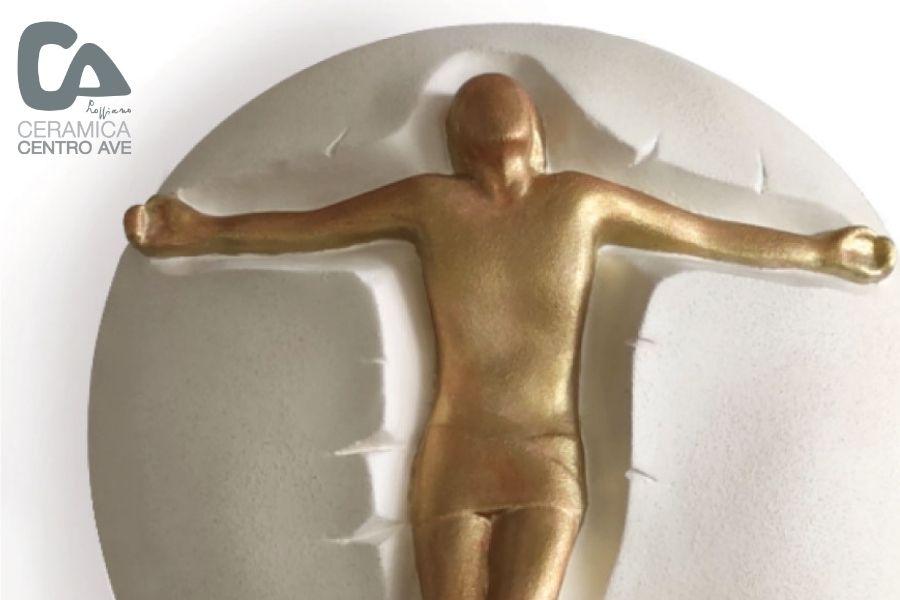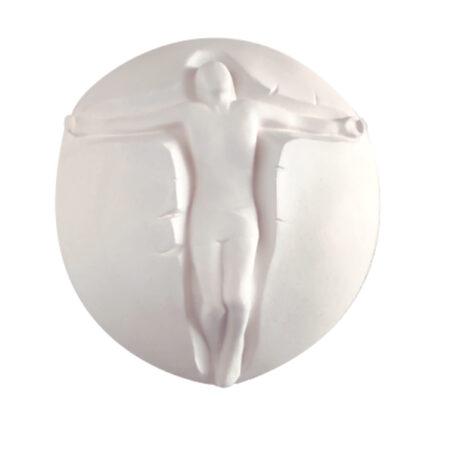Categories
- Post author By Liliana Frontela
- Post date 17 March 2022

Jesus Bread
The new Crucifix from Centro Ave Ceramica
Jesus coming out of the cross of a loaf. With this idea, the laboratory of the Ave Ceramica Center conceived and produced its new crucifix: Jesus Bread. Putting together in a single article two major events in the history of Jesus and the Christian faith – the institution of the Eucharist and the Crucifixion – this sculpture is one of the novelties of the 2022 catalog of the Centro Ave Ceramica.
The “Jesus Bread” sculpture is produced in two dimensions, both in the traditional white color of Centro Ave and with a golden color decoration. “We gave this very light gold to remember the gold of the grain of wheat“, tells us Giulia, one of the creators of the Ave Ceramica Center.

Indeed, one of the characteristics of this new crucifix is the variety of symbolic references that convey the sense of self-giving: the Eucharistic bread which is then broken and distributed, the grain of wheat that dies to generate new life, the crucified Jesus who gives his own life for the redemption of the world.
Made of white refractory clay in an entirely handcrafted and baked in the oven at over a thousand degrees, in the characteristic porous aspect typical of Centro Ave Ceramica products. The “Jesus Bread” crucifix is particularly recommended, in the smallest size (14.7 cm) as a gift on the occasion of First Communion and in the 24 cm version as a highly symbolic gift on the occasion of important moments in the life of the family or of one’s community.
The cross on bread
When making bread, it is a common tradition that a cut is made, usually in the shape of a cross, on top of the loaf, before cutting. There are two explanations for this, one religious and another one, physicochemical.
From the natural sciences, the cross on bread is explained as a relief valve that serves to prevent the excessive swelling of the dough and as a way to improve the leavening especially of the deeper layers of the bread, equally oxygenating all parts of the dough.

According to Catholic tradition, however, it is said that St. Clare, by direct order of the pope, and in the face of her own self-recognized humility, had to bless loaves of bread. As soon as she made the sign of the cross, an incision in the shape of a cross-appeared on the bread as a symbol of this blessing. Since then, that cross cut on the dough has received the meaning of the blessing on bread.
The sculpture “Jesus Bread” presents us with a reading of the cross on bread as the cross of Jesus Christ, a complete gift of self for all humanity.

